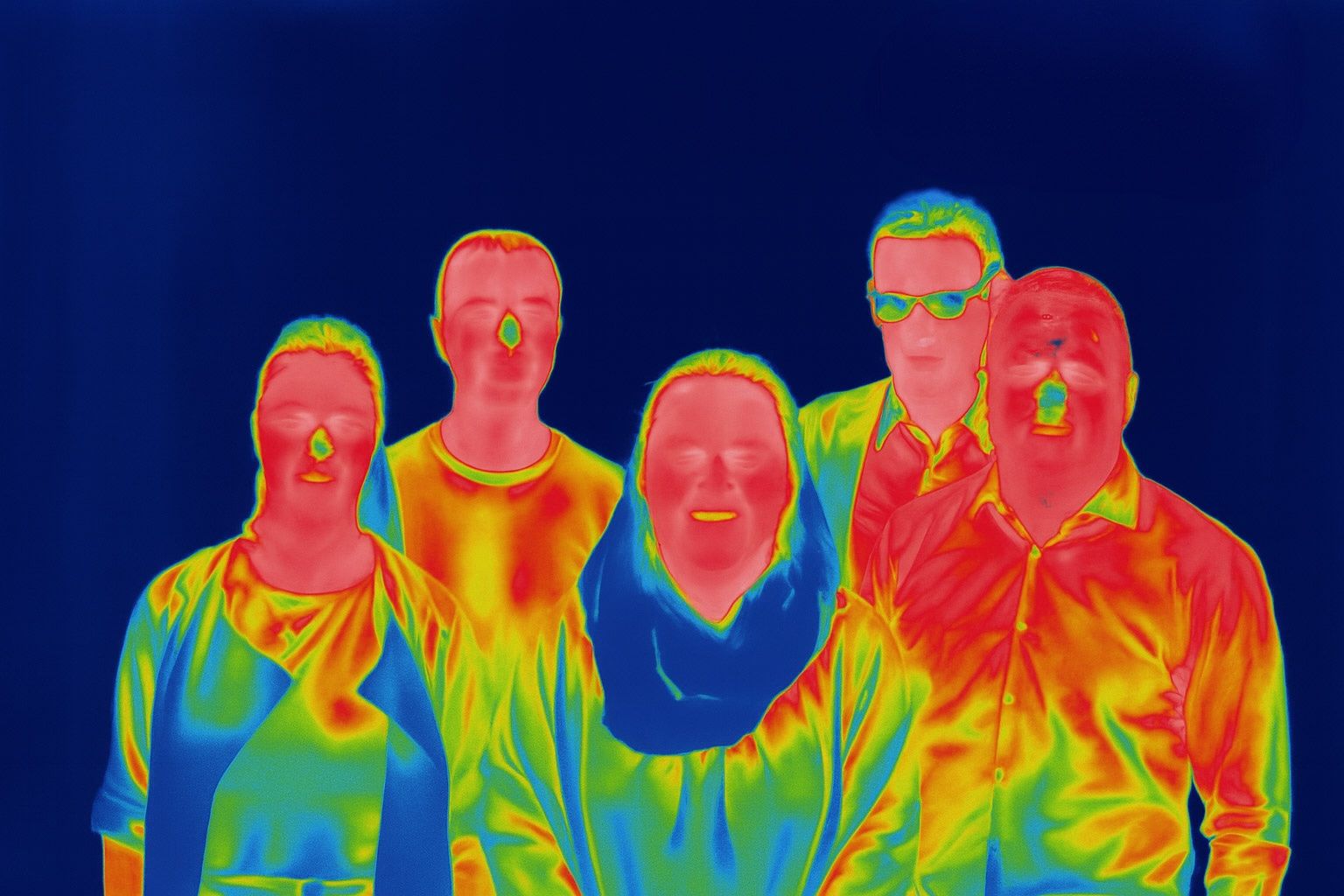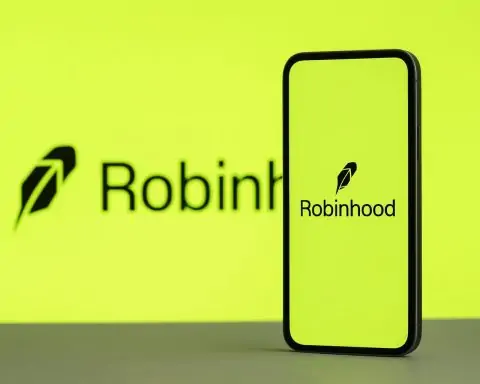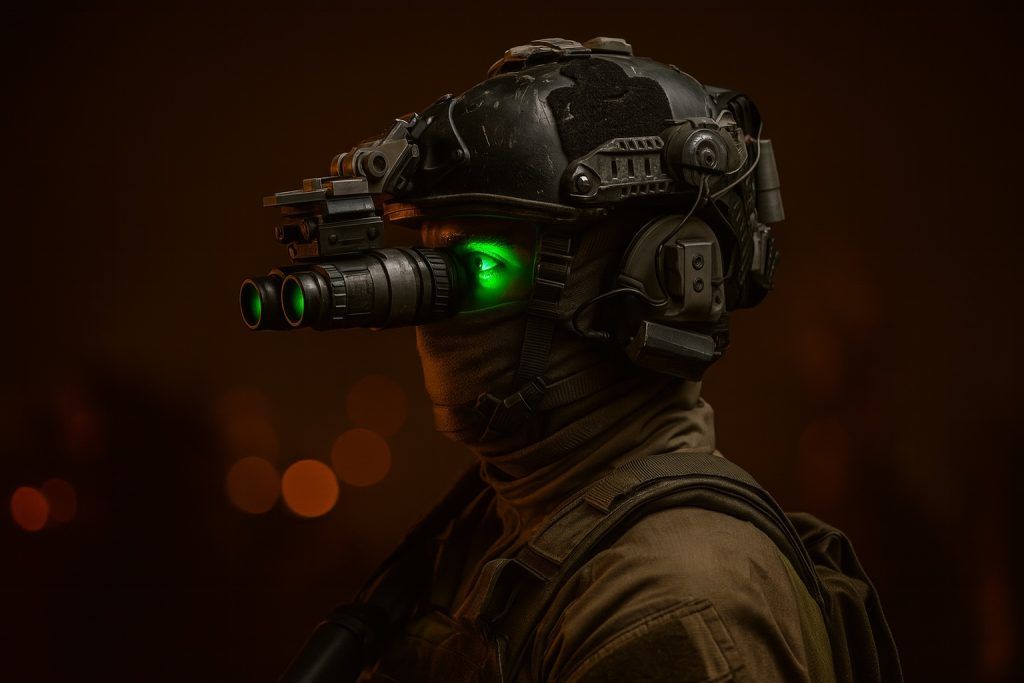- Sonim XP Pro Thermal 5G smartphones integrate a FLIR Lepton 3.5 thermal camera (160×120) with MSX overlay, a Snapdragon processor, a 5000 mAh battery, and 5G connectivity, launched in 2025.
- Doogee Fire 6 Max is a rugged 5G phone with a 120×160 thermal imager upscaled to 240×240 and a 20,800 mAh battery, released in 2025.
- Ulefone Armor 28 Ultra (Thermal Version) uses the ThermoVue T2 thermal module with AI upscaling to 640×512, an AI sharpening of 17×, 16 GB of RAM and 1 TB of storage on a MediaTek 9300+ platform, released in 2025.
- Teledyne FLIR One Edge Pro is a clip‑on wireless thermal camera for smartphones with a 160×120 sensor, MSX image blending, 30 m wireless range, and about 1.5 hours of battery life, priced around $500 mid‑2025.
- HSFTOOLS Finder S2 is a pocket thermal camera with a 256×192 sensor upscaled to 960×720, NETD ≤40 mK, a -20°C to 400°C range, and an expected price under $400.
- In 2025 FLIR refreshed its Ex-series industrial cameras with resolutions up to 320×240, and its C5 smartphone‑sized camera offers 160×120 resolution with MSX overlay and rugged design
- FLIR Scout Pro was introduced for public safety and law enforcement as a next‑gen thermal monocular with a wide 32° field of view and the ability to detect human heat signatures up to 500 meters.
- The U.S. Army ENVG‑B helmet goggles fuse a standard image‑intensifier night vision channel with a built‑in long‑wave infrared thermal sensor and support Rapid Target Acquisition via an encrypted wireless link.
- Pulsar Thermion 2 LRF XL60 rifle scope uses a 1024×768 thermal sensor, includes a built‑in laser rangefinder and AMOLED display, and can detect human‑size targets out to about 2,800 meters, with prices ranging from $5,000 to $9,000.
- DJI’s Mavic 3T drone offers a 640×512 30 Hz thermal camera plus a 4K visible camera on a sub‑1 kg frame, with about 40 minutes of flight time.
Comparison of 2025–2026 Thermal Vision Devices Across All Categories
Thermal imaging has burst out of the shadows of niche military use and into the mainstream in 2025. From smartphones with built-in heat sensors to cars that see in the dark, the latest thermal vision devices are hotter than ever (literally) – and a wave of even more advanced models is expected in 2026. Thermal cameras work by detecting infrared radiation (heat) instead of visible light, allowing users to visualize temperature differences. This capability is invaluable for everything from finding humans or animals in darkness to spotting electrical hot spots or hidden fire embers. The global market is “red hot” and growing rapidly as more brands jump in and prices gradually fall, though high-end gear can still cost a premium [1] [2]. Once users experience the power of “heat vision,” many say it’s hard to go back [3]. This report provides an in-depth comparison of the latest thermal vision tech across all major categories – consumer gadgets, industrial cameras, military and tactical systems, drone-mounted sensors, vehicle night vision, and helmet- or weapon-mounted optics. We’ll examine key features (like sensor resolution, refresh rates, range, battery life, and AI capabilities), real-world performance, use cases, pricing, and expert insights for each category, highlighting notable devices launched in 2025 and what to expect in 2026. By the end, you’ll understand the trends shaping the 2025–2026 thermal vision market, where seeing the unseen is becoming easier than ever.
Consumer Thermal Vision Devices (Handheld & Smartphone)
Not long ago, thermal cameras for personal use were a rarity – today, they’re popping up in phone accessories and even built directly into smartphones. The philosophy is simple: “The best thermal camera is the one you have with you,” says Chuck Becher of Sonim, whose new XP Pro Thermal 5G smartphone exemplifies this trend [4]. This ultra-rugged Android phone integrates a FLIR Lepton® 3.5 thermal micro-camera (160×120 resolution) directly into the device [5]. It overlays thermal and visible images with FLIR’s MSX technology for clarity, and its Snapdragon chipset lets users capture, analyze, and even live-stream thermal video over 5G [6] [7]. With a hefty 5000 mAh battery, the Sonim XP Pro Thermal provides all-day use for professionals like electricians, HVAC techs, or first responders who previously lugged separate thermal imagers [8] [9]. Sonim’s CCO argues this all-in-one approach “eliminates the need for bulky standalone devices or costly add-ons” – a compact phone can now do the job [10].
Meanwhile, a wave of Chinese rugged phones is bringing thermal vision to adventurous consumers and outdoor enthusiasts. Brands like Doogee, Oukitel, and Ulefone have launched Android phones with integrated IR cameras in 2025, often paired with huge batteries and even night-vision cameras. For example, the Doogee Fire 6 Max packs a massive 20,800 mAh battery and a 120×160 resolution thermal imager (upscaled to 240×240) in a shockproof 5G phone [11]. It’s billed as a “thermal vision rugged phone” combining thermal + traditional camera views to help hikers spot wildlife or electricians inspect equipment in the field [12] [13]. Similarly, Ulefone’s new flagship Armor 28 Ultra (Thermal Version) pushes specs even further – it features a cutting-edge ThermoVue T2 thermal module enhanced by AI. Ulefone claims the device uses AI super-resolution to achieve an effective 640×512 thermal image (from a lower native sensor resolution) with sharp detail [14] [15]. In fact, the Armor 28’s onboard AI chip can “sharpen” thermal images by 17× and even perform on-device object recognition [16] [17]. With a top-tier MediaTek 9300+ processor, 16 GB RAM and 1 TB storage, this rugged phone isn’t just for seeing heat – it’s a high-performance computer that can run AR apps and heavy AI algorithms on thermal data in real time [18] [19]. The Armor 28 Ultra underscores a broader 2025 trend: AI-powered thermal imaging. As Ulefone describes, “AI computing [introduced] into thermal imaging leads to a qualitative leap in image detail”, enabling features like automatic target highlighting and image fusion for richer visuals [20] [21].
On the more affordable side, clip-on thermal cameras for smartphones remain popular for DIY users and hobbyists. Teledyne FLIR’s own One Edge Pro is a top-rated example – a wireless thermal camera that clamps onto any iOS/Android device (or can even operate remotely via Wi-Fi/Bluetooth up to ~30m away) [22] [23]. Despite its tiny size, the One Edge Pro delivers a 160×120 resolution thermal image with FLIR’s MSX enhancement and measures temperatures up to 400 °C [24]. Reviewers praise its convenience for homeowners and contractors checking insulation or finding water leaks, though its ~1.5 hour battery and ~$500 price are noted limitations [25] [26]. New competitors are also emerging: in early 2025, Vietnam-based startup HSFTOOLS unveiled the Finder S2, a pocket-sized thermal camera dongle that plugs into a phone (no internal battery) [27] [28]. The Finder S2 offers a 256×192 resolution sensor – a notable jump over typical 160×120 units – and uses onboard “Super Resolution” algorithms to upscale images to 960×720 for extra clarity [29]. It’s impressively sensitive (NETD ≤40 mK, meaning it can discern very small temperature differences) and covers a -20°C to 400°C range like larger cameras [30] [31]. “Our goal…was to break down the barriers to thermal imaging, making it accessible to everyone,” says HSFTOOLS marketing director Jule Yue [32]. Indeed, at an expected price under $400, devices like the Finder S2 are putting pro-grade thermal capabilities in the hands of everyday users.
To compare a few of 2025’s notable consumer thermal devices side-by-side, see the table below:
| Device | Thermal Resolution | Refresh Rate | Notable Features | Battery | Price (USD) |
|---|---|---|---|---|---|
| Sonim XP Pro Thermal | 160×120 (FLIR Lepton 3.5) [33] | 8.7 Hz (est.) | 5G smartphone; MSX dual-image overlay; FLIR app suite [34] [35] | 5000 mAh (~24+ hrs) [36] | TBA (~$1,000+) (Rugged Pro tier) |
| Doogee Fire 6 Max | 160×120 (upscaled to 240) [37] | 25 Hz (est.) | Rugged phone; also 20 MP night-vision camera; enormous battery [38] [39] | 20,800 mAh (multi-day) [40] | Est. ~$600–$800 (Online) |
| FLIR One Edge Pro | 160×120 (Lepton) [41] | 8.7 Hz | Clip-on module (wireless); MSX image blend; 30m wireless range [42] [43] | 1.5 hr per charge [44] | ~$500 (mid-2025) [45] |
| HSFTOOLS Finder S2 | 256×192 (upsampled to 960×720) [46] | 25 Hz | Plug-in (no battery); 40 mK sensitivity; pro app with 15 color palettes [47] [48] | N/A (uses phone power) [49] [50] | ~$350 (projected) |
Table: A comparison of selected 2025 consumer thermal imaging devices, ranging from integrated smartphones to standalone phone attachments. Higher resolution and wireless connectivity distinguish the newest models, while prices span from a few hundred to over a thousand dollars.
Despite their differences, all these consumer-grade devices share a common theme: portability and integration. Whether it’s a thermal phone that can survive a construction site or a pocket dongle for a DIY home inspector, thermal vision is becoming a regular tool for consumers, hunters, and professionals alike. Real-world uses in 2025 have ranged from hunters tracking game at night to homeowners pinpointing where insulation is missing in their attic. Notably, many new devices also leverage software and AI. Apps like FLIR’s mobile suite or HSF’s companion app offer real-time analysis, cloud sharing, and even automated insights (e.g. highlighting the hottest spot in view). The upshot is that thermal imaging is more accessible, with “barriers to thermal imaging” dropping as one maker put it [51]. Expect 2026 to continue this trend, with rumors of even higher-resolution phone sensors and more rugged smart devices on the horizon.
Industrial & Commercial Thermal Cameras
Professionals in construction, maintenance, and public safety rely on more specialized thermal imagers – and 2025 brought significant upgrades here as well. Industrial thermal cameras prioritize accuracy, durability, and advanced analysis features. Teledyne FLIR and Fluke have long dominated this space, but now competition from newcomers is increasing [52] [53]. The emphasis is on higher resolution sensors, broader temperature ranges, and smarter software for diagnostics.
For building inspectors, electricians, and HVAC technicians, handheld thermal cameras remain indispensable. FLIR’s popular Ex-series got refreshed with models like the E8-XT, offering up to 320×240 resolution and expanded temperature measurement features [54] [55]. These cameras have pistol-grip designs, focus-free lenses, and onboard analysis tools. Even the compact FLIR C5 (a smartphone-sized thermal camera) delivers 160×120 resolution with a 5MP visual camera for MSX overlay, a 3.5-inch touchscreen, and Wi-Fi connectivity [56] [57]. Ruggedness is key – the C5 and its 128×96 sibling C3-X are built to survive 2-meter drops and harsh worksites [58] [59]. The only gripe in reviews was the slow boot time (~20 seconds) and use of MicroUSB on older units [60] [61]. Fluke, another major player, has released updated Ti-series cameras in 2025 with similar resolutions and a focus on connectivity (some models stream data over Wi-Fi or Bluetooth to cloud services for instant team sharing).
One innovation is the move toward higher resolution uncooled sensors in portable cameras. Ten years ago, 320×240 was high-end; now 640×480 is available in top models, and companies like Lynred have even produced 1280×1024 uncooled microbolometers for integration [62]. While megapixel thermal imagers are still rare and costly, we’re seeing steps in that direction. For example, some high-performance tablets and multi-sensor cameras launched for industrial use in 2025 feature 640×512 detectors for extremely detailed thermography [63] [64]. The benefit is clearer images at longer range – crucial for detecting fine issues like small cracks or distant hotspots. Thermal sensitivity has also improved. Many pro cameras now boast NETD of 40 mK or better (lower is more sensitive). This means they can discern temperature differences of 0.04°C, useful for early fault detection. In practical terms, a technician can spot a slightly warm electrical breaker or a subtle pipe leak that older cameras might have missed.
Industrial users also demand robust software and reporting. Modern thermal imagers come with apps to adjust emissivity, select color palettes, and generate automated reports. FLIR’s Thermal Studio and Research Studio software (updated in 2025) integrate AI to help categorize findings and even predict failures by comparing against databases [65] [66]. Some cameras like the HSFTOOLS Finder S2 (mentioned earlier) and FLIR One Pro include super-resolution algorithms that combine multiple frames to enhance image detail beyond the sensor’s native resolution [67] [68]. Others, like the Hikmicro E1L, keep things simple and affordable: the E1L (160×120, 25 Hz) for example is a rugged unit with a laser pointer for spot measurements, intended for quick troubleshooting rather than fancy reporting [69] [70]. Reviewers note that while it lacks Wi-Fi or visible-light overlay, it makes up for it with smooth 25 Hz video and great ergonomics for under $500 [71] [72].
Commercial firefighting thermal imagers saw upgrades in 2025 as well. FLIR showcased its latest K-Series cameras at the FDIC fire expo, highlighting “enhanced image quality” across the lineup [73] [74]. These cameras, built for firefighters, are extremely rugged (able to withstand high heat and water) and optimized to see through smoke. The K65, K55, and K33 models all got improvements: the K65 remains the top NFPA-compliant model with advanced features and full sealed waterproof design [75]. The midrange K55 and entry-level K33 now output “crisp thermal images on a bright LCD”, helping firefighters navigate and locate victims faster [76]. FLIR also emphasized affordability with the K2 – a compact TIC (thermal imaging camera) that uses MSX to punch above its 160×120 resolution, making thermal tech accessible to smaller fire departments on a budget [77]. Additionally, FLIR’s new K1 was shown as a personal situational awareness thermal camera – a small handheld imager that a responder can carry in their pocket to quickly scan around a scene [78].
Another growth area is security and law enforcement thermal devices, which straddle consumer and professional markets. FLIR introduced the Scout Pro in 2025, a next-gen thermal monocular tailored for public safety and law enforcement [79]. With a wide 32° field of view and detection of human heat signatures up to 500 meters away, the Scout Pro allows officers to quickly sweep large areas for suspects or missing persons [80]. At FDIC, FLIR even ran contests where first responders could try the device and potentially “win a FLIR Scout Pro”, underscoring how mainstream these tools have become for agencies [81]. For tactical police units, FLIR’s Breach PTQ136 remains a favorite: it’s an ultra-compact (7.4 oz) thermal monocular that can be helmet-mounted. “Built for the rigors of law enforcement,” the Breach uses a 320×256 60 Hz sensor to “spot the heat of suspects and objects in total darkness,” whether clipped to a SWAT officer’s helmet or used handheld [82] [83]. Many agencies in 2025 have adopted such devices for enhanced situational awareness during night operations or search and rescue missions.
In summary, the industrial and commercial segment in 2025 is defined by higher resolution, better sensitivity, and specialized designs for each job. Thermography in plants and factories is aided by crisper images and AI-driven analytics that can flag anomalies automatically. Firefighters get more reliable and affordable cameras to save lives. Inspectors and technicians benefit from easier, smarter tools – even battery-free thermal cameras that attach to phones for instant use [84] [85]. With the market thriving, even smaller players like HSFTOOLS are “positioning [themselves] as key competitors” against the legacy giants [86] [87], which ultimately drives more innovation. Going into 2026, expect industrial thermal cameras to continue improving in resolution (perhaps we’ll see more affordable 640×480 or even 1024×768 models), and software will play a bigger role – think AI that can automatically identify electrical faults or insulation gaps in thermal images. The vision, as HSFTOOLS predicts, is a future where “thermal technology is as standard as digital cameras in inspection work,” including integration with smart homes, IoT systems, and AI diagnostics for maintenance [88]. In other words, thermal imagers could soon become just another ubiquitous sensor in our increasingly connected world.
Military and Tactical Thermal Systems
The military has always been at the cutting edge of thermal vision, and the trend in 2025 is smarter, networked, and higher-definition thermal systems for the battlefield. Modern military thermal devices are not just standalone viewers – they are integrated into multi-sensor, information-sharing platforms that give soldiers superhuman sensing abilities, day or night. A prime example is the U.S. Army’s ENVG-B (Enhanced Night Vision Goggle – Binocular), which began fielding in recent years and continues to be a game-changer through 2025. This helmet-mounted system fuses a standard image-intensifier night vision (using new white phosphor tubes for better contrast) with a built-in long-wave infrared thermal sensor [89]. The result is a combined display that lets soldiers see the classic greenish night-vision image with heat signatures overlaid – so even if an enemy is hiding in shadows or smoke, their thermal outline appears in the goggles [90] [91]. Soldiers can toggle between modes or use fusion, which has been described as making targets “pop” out of the background. This technology literally lets troops “see through darkness like it’s broad daylight,” as one Army description put it, and even through obscurants like dust or fog that traditional NVGs can’t penetrate [92].
But ENVG-B does more than just show a fused image. It’s fully integrated into the soldier’s tactical network. Using an encrypted wireless link (the Intra-Soldier Wireless system), the goggles can receive video feed from a weapon-mounted thermal sight and display it in the soldier’s view [93] [94]. This is called Rapid Target Acquisition (RTA); it means a soldier can point their rifle around a corner or over a wall and see what the rifle’s thermal sight sees, without exposing themselves [95] [96]. In essence, you get a heads-up display aiming reticle from your gun’s perspective. The ENVG-B can also overlay navigation waypoints, maps, and other situational graphics from the Army’s Nett Warrior battle management system [97] [98]. It’s a step towards augmented reality combat goggles. In fact, defense companies are working on the next iteration (the IVAS headset, based on Microsoft HoloLens) which was delayed but is aiming for late 2025/2026 deployment – those will also incorporate thermal imaging plus a full-color digital display. As Elbit Systems (one ENVG-B contractor) quipped, these high-tech goggles let soldiers see the battlefield “like a video game”, with icons and thermal outlines highlighting enemies and objectives in real time.
On the heavy equipment side, vehicle-mounted thermal sights used by tanks and aircraft are advancing to third-generation FLIR technology. Unlike the uncooled microbolometers in infantry gadgets, these are high-end cooled thermal imagers that can operate in multiple IR bands for extended range and resolution. For instance, the newest sights for the M1A2 Abrams SEPv3 tanks and other armor integrate 3rd-gen forward-looking infrared sensors that offer higher resolution (some are equivalent to 1280×1024 or greater, in mid-wave IR) and extended identification range. This enables tank crews to spot and identify targets at many kilometers, even through haze or at night. In 2025, BAE Systems and Leonardo DRS (makers of many military thermal sights) have been working on sensor upgrades that reduce pixel pitch (to 12 μm or even 10 μm) and increase detector count, meaning sharper images for gunners and commanders [99] [100]. However, these developments are often classified or only hinted at in defense press releases. We do know that as of 2025, the U.S. Army has initiated programs to equip next-gen combat vehicles with advanced EO/IR sensor suites that fuse thermal with other sensors (like low-light CMOS cameras and LIDAR) for a comprehensive 360-degree view. This sensor fusion echoes what we see in the soldier goggles: combining spectral inputs for maximum situational awareness.
In the Special Operations realm and infantry portable category, there’s a lot of cross-pollination with civilian market innovations. Compact thermal monoculars and weapon sights used by special forces are getting lighter and more capable. A notable mention is the trend of thermal clip-on sights that attach in front of a day optic. These allow a sniper or marksman to add thermal capability to a regular scope on the fly. At SHOT Show 2025 (the large shooting sports expo), multiple companies showcased new thermal clip-ons and micro-sights for tactical use. For example, Armasight (a revived brand in the NV space) introduced a prototype called the “Operator” thermal clip-on – a small, rugged device that mounts on a Picatinny rail and feeds a thermal overlay into the shooter’s view (so one can use their familiar daytime scope reticle, but with heat signatures of targets visible) [101]. Additionally, a company called InfiRay showcased the InfiTac Fast Mini FMP13, touted as a “thermal optic small enough for a pistol” – this illustrates just how miniaturized thermal weapon sights are becoming [102]. Such a device likely has a very small display or connects to a smart pistol sight, but the mere fact it’s possible underscores continuous improvements in size, weight, and power (SWaP) efficiency.
One interesting crossover of tech is the integration of ballistic computers and laser rangefinders with thermal sights. The U.S. Army’s new XM157 Next-Gen Squad Weapon – Fire Control (while primarily a day optic with laser rangefinder and ballistic solver) could potentially incorporate thermal or at least low-light sensors in future updates [103] [104]. Currently, the XM157 Vortex sight features a rangefinder, environmental sensors, and a digital display to assist aiming [105]. While it doesn’t include a thermal imager in the first version, its open architecture means thermal fusion could be an upgrade path. The idea of a “smart scope” that shows range-adjusted aim points, records video, and highlights targets by heat is no longer sci-fi – it’s on the cusp of reality for squad-level optics, likely by 2026–2027. In fact, even some civilian smart scopes (like from ATN or Pulsar) already offer rudimentary ballistic calculators and video recording on top of thermal imaging; the military versions will surely build on that with ruggedized, zero-delay systems.
On the procurement front, militaries worldwide are investing heavily in thermal tech. In 2025 the US Army placed a $263 million order for more ENVG-B units from L3Harris, indicating full-rate production is ongoing [106]. European forces are also buying similar fusion goggles – for instance, Elbit’s Fused Night Vision System (F-NVGs) have been delivered to some NATO armies, providing them a similar capability of combining I² tube night vision and thermal. We’re also seeing proliferation of thermal binoculars and long-range border surveillance cameras with ultra-zoom thermal lenses and AI-assisted target recognition (to automatically spot human movement or vehicles across no-man’s land). These often use high-definition cooled sensors and are mounted on towers or vehicles.
In the tactical law enforcement domain (SWAT teams, etc.), military-grade thermal viewers are showing up more often. Police tactical teams in 2025 have access to helmet-mounted monoculars functionally identical to military ones like the FLIR Breach or the newer Teledyne FLIR Scion PTM. Such units help in hostage rescue or manhunt operations, letting officers move in darkness without using visible lights and see suspects hiding behind foliage or other cover by their heat. The overlap between mil and LE is significant – technologies developed for SOF (Special Operations Forces) trickle down to federal agencies and even well-funded local departments.
In summary, military and tactical thermal systems in 2025 are characterized by integration and augmentation: they’re not just cameras, but parts of a larger network-centric system that shares data and enhances human vision with computer intelligence. A soldier with today’s kit can detect an enemy by heat, tag them, transmit that target to others, and engage accurately, all under concealment. By 2026, as programs like IVAS come to fruition, we expect even more advanced features: perhaps AI target recognition built into the heads-up display (identifying a weapon or distinguishing a civilian from a combatant by their thermal outline), and multi-color thermal imaging (some new systems allow coloring different temperature ranges differently to distinguish, say, recently driven vehicles from background). The continued miniaturization will also mean every infantryman could get thermal vision, not just vehicle crews or special units – much like night vision goggles eventually became standard issue. Indeed, the US Army’s stated goal is to equip all close-combat forces with fused thermal/night vision goggles to own the night. Other armies are following suit, making thermal imagers as common as rifles on night missions. The thermal tactical revolution is well underway, making the darkness a dangerous place to hide.
Drone-Mounted Thermal Cameras
Mounting thermal cameras on drones has opened up huge possibilities in recent years, and 2025 saw both new thermal camera modules and ready-to-fly thermal drones reach the market. Lightweight, high-sensitivity thermal sensors are a perfect match for unmanned aerial systems – they enable firefighters to quickly scan a burning building from above, farmers to survey crops for stress, or search-and-rescue teams to find missing persons over large areas. The focus in 2025 has been on improving the core sensor performance (resolution and radiometric capability) while keeping size and weight drone-friendly, as well as integrating AI so that drones can autonomously analyze what they “see” in infrared.
Teledyne FLIR, the leader in thermal sensors, launched a major upgrade for drone cameras in early 2025: radiometric versions of its Boson+ and Hadron 640R+ modules. These are essentially tiny, gimbal-mountable thermal cameras that can plug into drones or robots. The new “+” versions now measure the exact temperature at every pixel in real time (that’s what radiometric means) [107]. This unlocks advanced uses – for example, a drone can inspect a solar farm and not just see a hotspot but quantify that a panel is 20°C hotter than its neighbors, indicating a fault. Or in disaster response, it can map temperature distributions across a wildfire front to predict spread. The Boson+ was already a 640×512 resolution, 60 Hz thermal core known for its excellent image quality. The Hadron 640R+ is a dual-sensor module (thermal + visible camera combined) built specifically for small drones; it weighs only 56 grams (about as much as a large egg) [108]! Despite that, it carries a 640×512 thermal sensor and a 12 MP visible camera in one unit. Both modules boast an industry-leading thermal sensitivity of ≤20 mK (0.02°C) – an incredibly low noise level, meaning they can detect the faintest temperature differences [109]. By comparison, typical thermal cameras a few years ago were 50 mK. This ultra sensitivity is crucial for applications like finding a person’s heat signature under tree cover or detecting subtle gas leaks from the air.
A big emphasis is on AI-powered analytics on the drone. FLIR’s new modules are designed to work hand-in-hand with their Prism AI framework [110]. This means a drone using a Boson+ camera can run algorithms to automatically detect and classify objects based on their heat signature – for example, distinguishing humans, animals, vehicles, or identifying if a machine is overheating beyond normal range. The radiometric data makes this easier (the AI isn’t just looking at an image, it has actual temperature values). In practical terms, we get smarter drones that can send an alarm like, “I found a person at these GPS coordinates” or “Transformer #12 is abnormally hot” without a human having to scrutinize every frame. Use cases cited for Boson+/Hadron 640R+ include: search & rescue (find people faster in darkness or dense terrain), security & defense (autonomous patrol drones that flag intruders or hidden threats), industrial inspection (power line and pipeline checks by drone, pinpointing issues), and precision agriculture (monitoring crop health via temperature variations) [111] [112].
On the ready-built drone side, major UAV manufacturers continued to refine their thermal drone offerings. DJI’s enterprise lineup – e.g. the Mavic 3T (Thermal) – remained a popular compact solution in 2025 for police and industrial users. The Mavic 3T carries a 640×512 30 Hz thermal camera along with a 4K visible camera and even a telephoto zoom camera [113] [114]. Weighing under a kilogram and folding up, it’s a portable yet powerful thermal drone. Real-world tests have shown it can spot people or animals hundreds of meters away; one tester humorously noted how family members playing hide-and-seek at night could not escape the drone’s “eye in the sky” [115] [116]. The drone streams a split-screen of thermal and optical video to the operator, and thanks to a 30 Hz thermal feed, moving subjects are tracked smoothly [117] [118]. Battery life on such drones is about 40 minutes, and DJI’s software (Pilot 2 app) provides features like isotherm palettes, temperature alarms, and the ability to attach coordinates to imagery for evidence. DJI did announce an updated platform in late 2024 known as the Matrice 30T (sometimes referred to as a Matrice “4T”), which offers longer flight time and a higher payload capacity for better thermal sensors or multiple sensors [119]. By 2025, many users have a choice: small quadcopter-style drones like Mavic 3T for quick deployment, or larger Matrice series drones that can carry advanced gimbals such as the H20T camera (which includes a thermal, zoom, wide camera, and laser rangefinder in one).
Autel Robotics (a DJI competitor) also has the Evo II Dual 640T on the market – a rugged folding drone with a 640×512 thermal camera (radiometric) and an 8K visible camera. It’s been praised for its image quality and the fact that it’s not subject to the same procurement restrictions some U.S. agencies face with DJI. In 2025, Autel introduced software updates to enable AI recognition of hot spots and a new Enterprise Live Deck 2 that allows streaming the drone’s thermal feed securely to command centers.
From a performance standpoint, detection ranges depend on lens optics and sensor. Many off-the-shelf thermal drones in 2025 can detect human-size heat signatures at around 300–500 meters altitude and vehicles even further (the limiting factor often becomes altitude regulations or line of sight). Some specialized long-endurance drones used for border surveillance or search and rescue might mount cooled thermal cameras with telephoto lenses, giving them man-tracking ability a mile or more away – but those are more military-grade. Interestingly, FLIR’s press noted that their new Boson+ module, when used in a drone, could detect “incredibly subtle temperature changes that most imagers would miss” [120]. This hints at applications like gas leak detection (tiny differences in temperature can indicate gas plumes) or finding disturbed earth (which cools differently at night – useful in forensic or security scenarios).
The drones themselves are also getting smarter and safer. Many thermal drones now have autonomous flight modes: e.g. one can program a grid flight over a solar farm, and the drone will automatically capture and even analyze each panel’s temperature, generating a report of any anomalies when it lands. In firefighting, drones equipped with thermal cameras and drop mechanisms were used in 2025 to fly over wildfires at night (when manned aircraft can’t fly safely) and drop small incendiary devices for backburn operations, all while using the thermal camera to monitor fire intensity. We also saw drones being used indoors with thermal sensors – e.g. in search of victims in a burning building, where a small drone can navigate halls and send back thermal imagery to firefighters outside, highlighting where a person might be on the floor through smoke.
Looking to 2026, expect further convergence of thermal and other sensors on drones. For example, pairing a thermal camera with a lidar sensor could allow autonomous drones to both “see” heat and build 3D maps of an environment, useful for navigating collapsed buildings or woods. The weight of thermal cores is dropping so much (sub-50 grams) that even small hobby drones may soon carry them. We might also anticipate the first sub-250 gram micro drones with a thermal camera (none exist yet because thermal cores and batteries were too heavy, but with something like FLIR Lepton cores and new batteries, it’s plausible). DJI hinted at work on a miniature thermal drone in 2024–25, but regulatory issues (certain countries restrict thermal resolution on export) can complicate ultralight thermal drones. Nonetheless, the trajectory is clear: thermal eyes in the sky are becoming standard equipment for police, firefighters, utilities, and even farmers, enabling faster and safer operations. As DroneDJ noted, Teledyne FLIR’s new modules are “setting a new standard” and giving developers tools to build the next generation of smart, heat-sensing applications on aerial platforms [121].
Vehicle-Mounted Thermal Cameras (Night Vision for Cars & More)
Thermal vision is also transforming the automotive world, bringing military-grade night vision to consumer and commercial vehicles. If you’ve ever driven a car on a dark road and narrowly missed a deer, you can appreciate the value of a system that sees heat and warns you of hazards beyond your headlights’ reach. High-end luxury cars have offered thermal night vision assist for years (Audi, BMW, Cadillac and others had systems highlighting pedestrians or animals on a dash display), but in 2025 this technology is poised for a big leap – moving from an optional gadget to an integral part of ADAS (Advanced Driver-Assistance Systems) for safety. The key development is making automotive thermal cameras meet functional safety standards and integrating them with AI for automatic braking.
In January 2024 (leading into 2025), French automotive supplier Valeo and Teledyne FLIR announced a strategic partnership to bring thermal imaging into mainstream passenger cars [122] [123]. They secured a first major contract with a global automaker to include a thermal camera in the next generation ADAS suite for night-time Automatic Emergency Braking (AEB) [124] [125]. Critically, this system will be the first to achieve Automotive Safety Integrity Level B (ASIL-B) rating for a thermal imager [126]. That means it’s certified reliable enough for life-saving functions like emergency braking. The thermal camera will complement radar, lidar, and visible cameras, but it has a unique advantage: detecting “vulnerable road users” (pedestrians, cyclists, animals) in darkness or foul weather far better than regular cameras [127] [128]. As Valeo’s division president Marc Vrecko explained, this new thermal night vision, combined with AI perception software, “will improve the overall performance of ADAS…especially at night” [129]. And Paul Clayton of Teledyne FLIR emphasized their goal of making “thermal imaging technology ubiquitous within transportation…allowing more drivers and automated vehicles to see in complete darkness, in cluttered environments, and in adverse weather where other sensors struggle.” [130] This collaboration is a strong signal that by 2025–2026, we’ll start seeing cars (perhaps an upcoming model from a major OEM) that automatically brake for pedestrians at night thanks to a thermal camera detecting a person on the road that neither the driver nor standard optical sensors could see [131] [132].
Why is this so timely? Unfortunately, pedestrian fatalities have been at a high – 2022 was the deadliest year for pedestrians in the U.S. since 1981, with ~75% of those deaths occurring at night [133] [134]. Current AEB systems in cars mostly rely on cameras and radar, which perform poorly in the dark (radar can detect an object but not classify it; camera performance plunges without light). Thermal cameras directly address this gap by highlighting living beings (and even large animals like deer or elk) based on their heat, at distances well beyond headlight range. Regulators have noticed: new U.S. regulations are in the works to require night-time pedestrian AEB tests [135]. Thermal is essentially the enabling tech to pass those tests. So we’re on the cusp of a safety revolution: your car slamming the brakes because it saw a warm body stepping onto the road in pitch dark, even if you haven’t yet.
From a product perspective, Teledyne FLIR has an automotive thermal camera unit known as PathFindIR II (and newer variants) that’s been supplied for years in luxury cars. Over a million vehicles have been equipped with FLIR thermal sensors for night vision assist to date [136]. The 2025 iteration being developed with Valeo will likely build on FLIR’s latest Boson core, tuned for automotive use (wide field of view, high dynamic range to handle both hot engines and cold backgrounds, etc.), and crucially, with an ASIL-rated processing pipeline. Valeo contributes their AI software and automotive integration experience. The camera will feed into the car’s computer which fuses it with other sensors. The driver might not even be aware of the thermal camera explicitly; instead, they’ll experience it as the car simply “reacting” correctly to hazards at night. However, some implementations might also display an infrared view to the driver on a screen or head-up display, possibly highlighting the detected hazard (like a yellow box around a pedestrian).
Beyond passenger cars, thermal cameras are being mounted on other vehicles for different uses. Many fire trucks now feature a thermal camera on a mast or integrated into their 360° camera system, so the driver can see hotspots around the truck when arriving on scene (helpful for hazmat situations to see if a tank is overheating, etc.). Police helicopters (while technically aircraft, not ground vehicles) have long used gimbal-mounted FLIR cameras – in 2025 those systems (like the WESCAM or FLIR StarSafire series) are adding higher resolutions and advanced geo-tracking so an officer can simply tap on a thermal video feed (like on a moving suspect) and the system will track and geo-label that target automatically.
Military vehicles continue to use thermal periscopes and driving aids. One interesting development: augmented reality windshields. There are prototype military vehicles where the driver doesn’t have a direct view (like in armored cars) but instead has panoramic cameras and thermal imagers feeding a wrap-around display or AR headset. These systems can outline obstacles or highlight humans in thermal vision, ensuring the driver doesn’t run over something in the dark. It’s possible we’ll see early versions of this tech in civilian off-road vehicles or high-end cars eventually – for instance, an SUV that can virtually “see through fog” by overlaying thermal imagery on the windshield display.
In consumer vehicles, pricing and availability for thermal night vision options have historically been high (often $2,000–$3,000 add-ons). The push by 2025 is to bring that down. If Valeo/FLIR’s system is going into a high-volume car, that implies cost has been tamed through scale. It might become a ~$500 component, which is easier to swallow, especially if regulations or safety ratings incentivize it. There’s also aftermarket: companies like Lanmodo and others sell dash-mounted night vision systems (some thermal, some low-light IR) that anyone can add to their car. As the core thermal sensors get cheaper, these aftermarket units are creeping under $1,500. By 2026, we might see a sub-$1000 thermal night vision kit with decent resolution for older cars – a bit like how backup cameras became a cheap add-on before they became mandated.
Finally, autonomous vehicles (AVs) deserve a mention. AV developers have realized that thermal cameras can help in certain edge cases where vision and lidar falter – for example, detecting humans or animals at night (for which even the best lidar is just a bunch of dots). Companies like Waymo, Cruise, etc., had not initially used thermal in their sensor suites, but some were testing them by 2025. The challenge was integrating it and training AI on a new sensor type. FLIR actually built the world’s largest thermal image dataset for automotive AI, with over 5 million annotated thermal frames in 2023 [137], specifically to help AVs learn to interpret infrared. At CES 2025, FLIR (Teledyne) demonstrated their Thermal Imaging Automotive Development Kit in partnership with EV producer Polestar, showing how Prism AI could enable an EV to automatically detect a pedestrian at night and trigger AEB [138] [139]. As the industry moves toward “Vision Zero” (zero traffic fatalities), thermal imaging is looking less like a cool gadget and more like a necessary sensor to save lives. So by 2026, expect at least one major car maker to offer a thermal-enhanced safety system, and others to quickly follow once the results (potentially dramatic reductions in night crashes) become evident.
Helmet- and Weapon-Mounted Thermal Optics
Thermal vision devices that attach to helmets or weapons have become increasingly vital for soldiers, law enforcement, and even civilian night hunters. In 2025, these devices are getting lighter, more modular, and more feature-rich, often combining multiple functions (like recording, rangefinding, or even WiFi streaming) into a single optic. We’ve already touched on the ENVG-B helmet goggles in the military section – those are helmet-mounted and provide an incredible capability by fusing thermal with analog night vision [140]. Here, we’ll focus on two sub-categories: helmet-mounted thermal monoculars (often used hands-free by infantry or police) and weapon-mounted thermal sights (for rifles and other firearms), and how they’ve evolved.
On the helmet side, beyond full goggle systems like ENVG, many users employ thermal monoculars that can attach to a helmet swing-arm (similarly to how a PVS-14 night vision monocular would). One of the most popular is the FLIR Breach PTQ136, mentioned earlier, which by 2025 has become a staple for special forces and SWAT teams due to its tiny size (only 2.95×1.9×1.7 inches, 7.5 ounces) and respectable performance [141]. It provides a 320×256 resolution at a smooth 60 Hz, giving the wearer a quick heads-up on any heat sources around them. Users often mount a Breach on one side of the helmet and a traditional NV monocular on the other, achieving a kind of manual “fusion” by using one eye for night vision and one for thermal. Newer entrants in 2025 include the AGM Global Vision Taipan helmet-mounted series and the Infiray MH25, both offering 384×288 or 640×512 sensors in similar or smaller form factors than the Breach. These devices typically have a mini OLED display inside to present the thermal image to the user’s eye. Battery life is 1.5 to 3 hours on a CR123 or 18650 battery, so many operators use external battery packs on their helmet to extend runtime. A big trend here is wireless connectivity – the latest helmet monoculars can stream their view to a phone or remote screen, and some can record video internally (helpful for after-action review or evidence gathering in law enforcement).
For weapon-mounted thermal optics, 2025 brought improved performance and also more integration with ballistic systems. High-end thermal rifle scopes used by militaries (like the Trijicon REAP-IR or newer variant of the Army’s Family of Weapon Sights-Individual (FWS-I)) are 60 Hz, 640×480 devices with multiple zoom levels and reticles. The FWS-I, in particular, not only provides a thermal sight picture to the shooter but, as noted, can pipe that image to the ENVG-B goggles wirelessly [142]. That combination allows firing in a way never before possible (around corners, from the hip accurately, etc.). In 2025, the Army is expanding fielding of these FWS systems. At the same time, civilian market thermal scopes are advancing briskly: Pulsar, a leading brand, introduced new models in their Thermion 2 LRF lineup at SHOT Show 2025 [143]. The Thermion 2 LRF XG60 and XL60 are rifle scopes that resemble traditional daylight scopes (they even mount with 30mm rings) but are fully digital thermal sights. They feature a built-in laser rangefinder (that’s the LRF) and sport AMOLED HD displays for the shooter. Notably, the Thermion 2 XL60 uses a 1024×768 thermal sensor – that’s an extremely high resolution for a commercial scope, likely using the Lynred 12μm 1280×1024 detector but windowed or scaled [144]. Pulsar claims detection of human-size targets out to 2,800 meters with this model, under optimal conditions [145]. These scopes also have recoil-activated video recording and can interface with a smartphone app for controlling settings or downloading footage. Prices range from about $5,000 to $9,000 for these high-end scopes.
At a more budget level, there are now thermal reflex sights appearing. In 2024, Holosun (known for red dot sights) teased its Dual-mode Reflex Sight (DRS) series, which includes a thermal overlay model (DRS-TH) and a digital night vision model. By 2025, Holosun was refining these, aiming to produce a reflex sight that looks like a normal 1x red dot but can project a thermal image of targets up to ~100 yards. This is intended for rapid target acquisition in close quarters, such as an entry team spotting a person hiding behind a bush via their heat. While not widely released yet, it’s an example of the convergence: small, unmagnified optics with see-through thermal can give the user the best of both worlds (you can use it like a red dot in daylight, or turn on thermal mode at night). We might see commercial availability of these by 2026, which could be a game-changer for home defense or night hog hunting.
Mounting systems are also evolving. Weapon sights used to be all standalone units. Now we see clip-on thermal imagers that attach in front of a day scope, preserving the day scope’s eye relief and reticle. The advantage is you don’t need to re-zero and you can use your familiar scope setup. Several were shown at SHOT 2025: AGM’s Victrix clip-on and Steiner’s Cinder, for example. They add minimal weight and can be quickly detached if not needed. For helmet-mounted, as mentioned, some go with one thermal monocular on a swing arm. Others are experimenting with heads-up displays inside the helmet that can display a thermal feed coming from a weapon sight or even a drone overhead. Essentially, the soldier becomes a node in a sensor network, receiving thermal video from various sources (weapon, buddy’s viewpoint, UAV feed). That tech is still in prototyping, but the groundwork is being laid with systems like the ENVG-B and FWS.
One cannot ignore the civilian hunting segment here as well. Thermal rifle scopes and helmet (or rather, head-mounted) monoculars have proliferated for activities like hog and coyote hunting at night. Companies like ATN, AGM, and Pulsar offer relatively affordable units (some scopes under $2,000 now) with 384×288 sensors. In 2025, there’s a big community of hunters using helmet-mounted thermals to scan fields (for situational awareness) and rifle-mounted thermals to take shots. One new product for them was the Pulsar Merger LRF XP50 binoculars – these look like normal binos but are thermal, at 640×480, and include a laser rangefinder. Merging the convenience of binocular vision (which our brains interpret easier than monocular) with thermal imaging, they allow hunters or wildlife observers to comfortably scan for heat signatures at long range. The LRF helps judge distance so one can stalk or take a shot accurately. They even have image and video recording and can stream to a phone or tablet for a companion to watch along.
In policing, weapon-mounted thermals are less common (most police use visible lasers or red dots since they operate often in mixed environments with some light), but there are instances like border security or SWAT snipers using them. In 2025, U.S. Border Patrol agents, for example, have been testing rifle-mounted thermals combined with spotting-scope thermals for interdiction at night in remote areas.
The future trend for helmet/weapon optics is clearly going toward integration and weight reduction. Troops and officers want fewer devices if possible. Perhaps by 2026–27, we’ll see a unified solution: a single device that can act as a helmet monocular and then clip onto a rifle as a sight. There’s also interest in thermal fusion sights – imagine a rifle scope that combines an optical day scope, an image-intensifier night channel, and a thermal channel all in one, fusing the images. Prototypes exist (like some Israeli Smart Shooter systems), but nothing mainstream yet due to cost and complexity. Given how fast tech is advancing, 2026 might surprise us with at least a hybrid or two.
To illustrate how far things have come, consider that in early 2000s, a portable thermal weapon sight weighed 4–5 lbs and had maybe 160×120 resolution. In 2025, a state-of-art thermal sight can weigh under 2 lbs, with 640+ resolution, record video, range targets, and network with other devices [146] [147]. And a helmet thermal that once was science fiction now sits on many operators’ heads, giving them Predator-like vision. With expert users raving that “once you go thermal it’s hard to go back” [148], we can expect continuous refinement in this domain. As one industry insider at SHOT Show 2025 put it, thermal and night vision optics are being offered by more brands than ever, and while still a steep investment, these optics provide a decisive edge in the field [149]. That edge – the ability to see what others can’t – is driving everyone from soldiers to hunters to equip themselves with thermal vision.
Trends and Predictions for 2025–2026
Bringing all categories together, several key trends are shaping the thermal vision market going into 2026:
- Higher Resolution & Sensitivity Across the Board: Manufacturers are pushing sensor resolution limits. 640×480 and 640×512 have become common in premium devices (drones, weapon sights, automotive cams), and we’re seeing early adoption of megapixel-class thermal sensors (e.g. 1024×768, 1280×1024) in specialized products [150]. Alongside resolution, NETD sensitivity values are dropping – from ~50 mK a few years ago to 20 mK or better in 2025’s top modules [151]. This means clearer, crisper thermal images with more detail and range. By 2026, it’s likely that what was cutting-edge (say a 640×512 30 Hz core) will trickle down to mid-tier devices, and 1024×768 cores might start appearing in flagship gear for defense and industry.
- AI and Smart Features: Artificial intelligence is being integrated at every level. Whether it’s a phone app that upscales and labels thermal images [152] [153], a drone core that tracks objects autonomously [154] [155], or a car that alerts and brakes for a pedestrian [156] [157], software algorithms are making thermal sensors far more powerful. Object detection, temperature anomaly alerts, and even facial recognition (by heat signature) are in development. We can expect 2026 devices to feature more onboard AI – for instance, a thermal scope might recognize and highlight target profiles (human vs animal), or an industrial camera might automatically flag which machine is likely to fail based on heat patterns and past data. Teledyne FLIR’s creation of huge thermal datasets [158] for training AI means future systems will be much “smarter” about what the thermal imagery means.
- Sensor Fusion and Augmented Reality: Many next-gen systems combine thermal with other sensors: visible light cameras (for MSX edge overlay as FLIR uses [159]), image intensifiers (military ENVG fusion [160]), lidar or radar (in autonomous vehicles), etc. The goal is a comprehensive view that compensates for each sensor’s weaknesses. By 2026, we anticipate more fused thermal-night vision products especially for professional users. For example, security cameras that merge thermal and 4K color video for 24/7 surveillance, or firefighting masks that overlay thermal data onto a normal view so firefighters can navigate more safely. In parallel, augmented reality is leveraging thermal data – from fighter pilot helmets marking targets with infrared info, to maintenance techs wearing AR glasses that show thermal readings of equipment as they look at it. This trend will grow as both thermal sensors shrink and AR displays improve.
- Miniaturization & Lower Power: As with all tech, thermal devices are getting smaller, lighter, and more efficient. We saw examples like the coin-sized Hadron module for drones【42†】 and phone dongles with no battery [161]. Uncooled microbolometers have benefited from MEMS fabrication improvements – pixel pitches have gone from 25 μm to 17 μm to 12 μm, even 10 μm in labs [162] [163]. Smaller pixels = smaller sensors or higher resolution in the same size. Expect continued miniaturization enabling new uses: perhaps thermal sensors integrated in smartphones natively (beyond rugged phones – maybe a flagship phone includes one as a feature), or wearables (a thermal camera on a glasses frame for night jogging safety?). In fact, the wearables segment is being eyed by companies; a recent market report suggests thermal imaging in wearables (like smart helmets, glasses, etc.) will be a growing niche by late decade [164] [165].
- Cost Reduction & Consumerization: Uncooled thermal cameras have already dropped in price significantly from a decade ago, and this is accelerating. In 2017 the global uncooled thermal market revenue was $2.5B [166]; now it’s poised to reach as high as $16B by 2026 according to some studies [167]. This growth is fueled by “the unveiling of more cost-effective products” which enhance the uncooled segment’s stance [168]. As volumes increase (e.g. if automotive adoption soars), economies of scale should push prices down further. The high cost of cooled cameras will still limit them to specialist roles, but uncooled tech will dominate everyday applications. By end of 2026, we might see sub-$200 pocket thermal imagers and $1000 thermal scopes that outperform $5000 models from just a few years prior. This democratization will also lead to creative new consumer uses – imagine thermal cameras in home security systems (to alert if someone is lurking in your yard at night by their heat), or integrated into smart appliances (a smart oven that thermally monitors your food for perfect cooking!).
- New Applications & Markets: As thermal imagers become more prevalent, new uses keep emerging. In healthcare, for example, thermal cameras are being tested for vital signs monitoring (detecting breathing rate or fever without contact) and even in diagnostics (thermal patterns of skin can indicate poor circulation or other issues). At CES 2025, one startup showed a “digital caregiver” device using thermal imaging to monitor an elderly person’s heart rate and respiration from afar [169] [170]. In sports and fitness, some gyms use thermal cameras to ensure equipment is sanitized (scanning for residual heat from a person who just used a machine). Wildlife conservationists deploy thermal drones to count animals or detect poachers at night. Even the entertainment industry has toyed with thermal – e.g. thermal cameras used in art installations or in unique film cinematography. As prices fall and awareness rises, thermal imaging could become as ubiquitous as regular cameras in certain fields, fulfilling the vision that HSFTOOLS described of it being “as standard as digital cameras in inspection work” and beyond [171].
In conclusion, the period of 2025–2026 is an exciting inflection point for thermal vision technology. We’re witnessing a shift from predominantly specialized, expensive gear to a broad spectrum of products from consumer to enterprise, all riding the wave of better sensors and AI integration. Experts in the field are optimistic: “The thermal imaging market has emerged as one of the most profitable niche verticals…with widescale adoption in personal vision, industrial imaging, security and surveillance,” notes a Global Market Insights study [172]. Uncooled thermal tech is rapidly gaining popularity, and R&D is actively addressing past limitations like high cost and low resolution [173] [174]. The expectation is that by making thermal cameras smaller, smarter, and cheaper, they will become a standard component in everything from our phones and cars to our public safety infrastructure.
As we look to 2026 and beyond, one can imagine the thermal vision market truly heating up: more competition, more innovation (perhaps novel things like polarization-sensitive thermal cameras or ultra-fast microbolometers with <1 ms thermal time constants [175] for high-speed IR video). One thing is certain – our world is filled with heat information invisible to the naked eye, and these devices give us the superpower to see it. From the homeowner detecting heat leaks to the soldier spotting threats in darkness to the autonomous car avoiding an accident, thermal vision devices are making a profound impact. The old predator’s tagline, “We see in only one spectrum – they see in all,” is no longer the domain of science fiction aliens; it’s becoming reality for humans. The companies and products highlighted in this report are at the forefront of that thermal vision revolution, and their progress over 2025–2026 will shape how we perceive (and protect) our world in the infrared spectrum.
Sources: The information in this report was gathered from a range of 2024–2025 industry press releases, product announcements, and expert reviews, including Digital Camera World’s thermal camera guide [176] [177], SHOT Show 2025 optics highlights [178] [179], DroneDJ’s report on FLIR’s new drone cameras [180] [181], a Valeo press release on thermal ADAS [182] [183], and multiple Teledyne FLIR announcements and demonstrations [184] [185]. Specific product details and quotes were drawn from official sources such as the Sonim XP Pro Thermal launch PR [186] [187], HSFTOOLS’s Finder S2 announcement [188] [189], and FLIR’s firefighting and public safety product showcases [190] [191]. These and other cited references throughout the text provide a fact-checked foundation for the comparisons and trend analyses presented.
References
1. shotshow.org, 2. www.sdmmag.com, 3. shotshow.org, 4. ir.sonimtech.com, 5. ir.sonimtech.com, 6. ir.sonimtech.com, 7. ir.sonimtech.com, 8. ir.sonimtech.com, 9. ir.sonimtech.com, 10. ir.sonimtech.com, 11. www.doogee.com, 12. www.doogee.com, 13. www.doogee.com, 14. www.ulefone.com, 15. www.ulefone.com, 16. www.ulefone.com, 17. www.ulefone.com, 18. www.ulefone.com, 19. www.ulefone.com, 20. www.ulefone.com, 21. www.ulefone.com, 22. www.digitalcameraworld.com, 23. www.digitalcameraworld.com, 24. www.digitalcameraworld.com, 25. www.digitalcameraworld.com, 26. www.digitalcameraworld.com, 27. www.globenewswire.com, 28. www.globenewswire.com, 29. www.globenewswire.com, 30. www.globenewswire.com, 31. www.globenewswire.com, 32. www.globenewswire.com, 33. ir.sonimtech.com, 34. ir.sonimtech.com, 35. ir.sonimtech.com, 36. ir.sonimtech.com, 37. www.doogee.com, 38. www.doogee.com, 39. www.doogee.com, 40. www.doogee.com, 41. www.digitalcameraworld.com, 42. www.digitalcameraworld.com, 43. www.digitalcameraworld.com, 44. www.digitalcameraworld.com, 45. www.digitalcameraworld.com, 46. www.globenewswire.com, 47. www.globenewswire.com, 48. www.globenewswire.com, 49. www.globenewswire.com, 50. www.globenewswire.com, 51. www.globenewswire.com, 52. www.globenewswire.com, 53. www.globenewswire.com, 54. www.digitalcameraworld.com, 55. www.digitalcameraworld.com, 56. www.digitalcameraworld.com, 57. www.digitalcameraworld.com, 58. www.digitalcameraworld.com, 59. www.digitalcameraworld.com, 60. www.digitalcameraworld.com, 61. www.digitalcameraworld.com, 62. www.edrmagazine.eu, 63. www.digitalcameraworld.com, 64. www.digitalcameraworld.com, 65. www.globenewswire.com, 66. www.globenewswire.com, 67. www.globenewswire.com, 68. www.globenewswire.com, 69. www.digitalcameraworld.com, 70. www.digitalcameraworld.com, 71. www.digitalcameraworld.com, 72. www.digitalcameraworld.com, 73. www.firerescue1.com, 74. www.firerescue1.com, 75. www.firerescue1.com, 76. www.firerescue1.com, 77. www.firerescue1.com, 78. www.firerescue1.com, 79. www.firerescue1.com, 80. www.firerescue1.com, 81. www.firerescue1.com, 82. www.firerescue1.com, 83. www.firerescue1.com, 84. www.globenewswire.com, 85. www.globenewswire.com, 86. www.globenewswire.com, 87. www.globenewswire.com, 88. www.globenewswire.com, 89. www.peosoldier.army.mil, 90. www.peosoldier.army.mil, 91. www.peosoldier.army.mil, 92. www.peosoldier.army.mil, 93. www.peosoldier.army.mil, 94. www.peosoldier.army.mil, 95. www.peosoldier.army.mil, 96. www.peosoldier.army.mil, 97. www.peosoldier.army.mil, 98. www.peosoldier.army.mil, 99. www.researchgate.net, 100. www.edrmagazine.eu, 101. www.facebook.com, 102. www.youtube.com, 103. www.armytimes.com, 104. www.kopin.com, 105. www.armytimes.com, 106. www.army-technology.com, 107. dronedj.com, 108. dronedj.com, 109. dronedj.com, 110. dronedj.com, 111. dronedj.com, 112. dronedj.com, 113. www.digitalcameraworld.com, 114. www.digitalcameraworld.com, 115. www.digitalcameraworld.com, 116. www.digitalcameraworld.com, 117. www.digitalcameraworld.com, 118. www.digitalcameraworld.com, 119. www.digitalcameraworld.com, 120. dronedj.com, 121. dronedj.com, 122. www.valeo.com, 123. www.valeo.com, 124. www.valeo.com, 125. www.valeo.com, 126. www.valeo.com, 127. www.valeo.com, 128. www.valeo.com, 129. www.valeo.com, 130. www.valeo.com, 131. www.valeo.com, 132. www.valeo.com, 133. www.valeo.com, 134. www.valeo.com, 135. www.valeo.com, 136. oem.flir.com, 137. oem.flir.com, 138. x.com, 139. x.com, 140. www.peosoldier.army.mil, 141. www.firerescue1.com, 142. www.peosoldier.army.mil, 143. shotshow.org, 144. www.edrmagazine.eu, 145. shotshow.org, 146. shotshow.org, 147. shotshow.org, 148. shotshow.org, 149. shotshow.org, 150. www.edrmagazine.eu, 151. dronedj.com, 152. www.globenewswire.com, 153. www.globenewswire.com, 154. dronedj.com, 155. dronedj.com, 156. www.valeo.com, 157. www.valeo.com, 158. oem.flir.com, 159. www.digitalcameraworld.com, 160. www.peosoldier.army.mil, 161. www.globenewswire.com, 162. www.researchgate.net, 163. www.edrmagazine.eu, 164. www.marketresearchintellect.com, 165. www.verifiedmarketreports.com, 166. www.sdmmag.com, 167. www.sdmmag.com, 168. www.sdmmag.com, 169. www.inizioevoke.com, 170. www.inizioevoke.com, 171. www.globenewswire.com, 172. www.sdmmag.com, 173. www.sdmmag.com, 174. www.sdmmag.com, 175. maxtech-intl.com, 176. www.digitalcameraworld.com, 177. www.digitalcameraworld.com, 178. shotshow.org, 179. shotshow.org, 180. dronedj.com, 181. dronedj.com, 182. www.valeo.com, 183. www.valeo.com, 184. dronedj.com, 185. x.com, 186. ir.sonimtech.com, 187. ir.sonimtech.com, 188. www.globenewswire.com, 189. www.globenewswire.com, 190. www.firerescue1.com, 191. www.firerescue1.com










